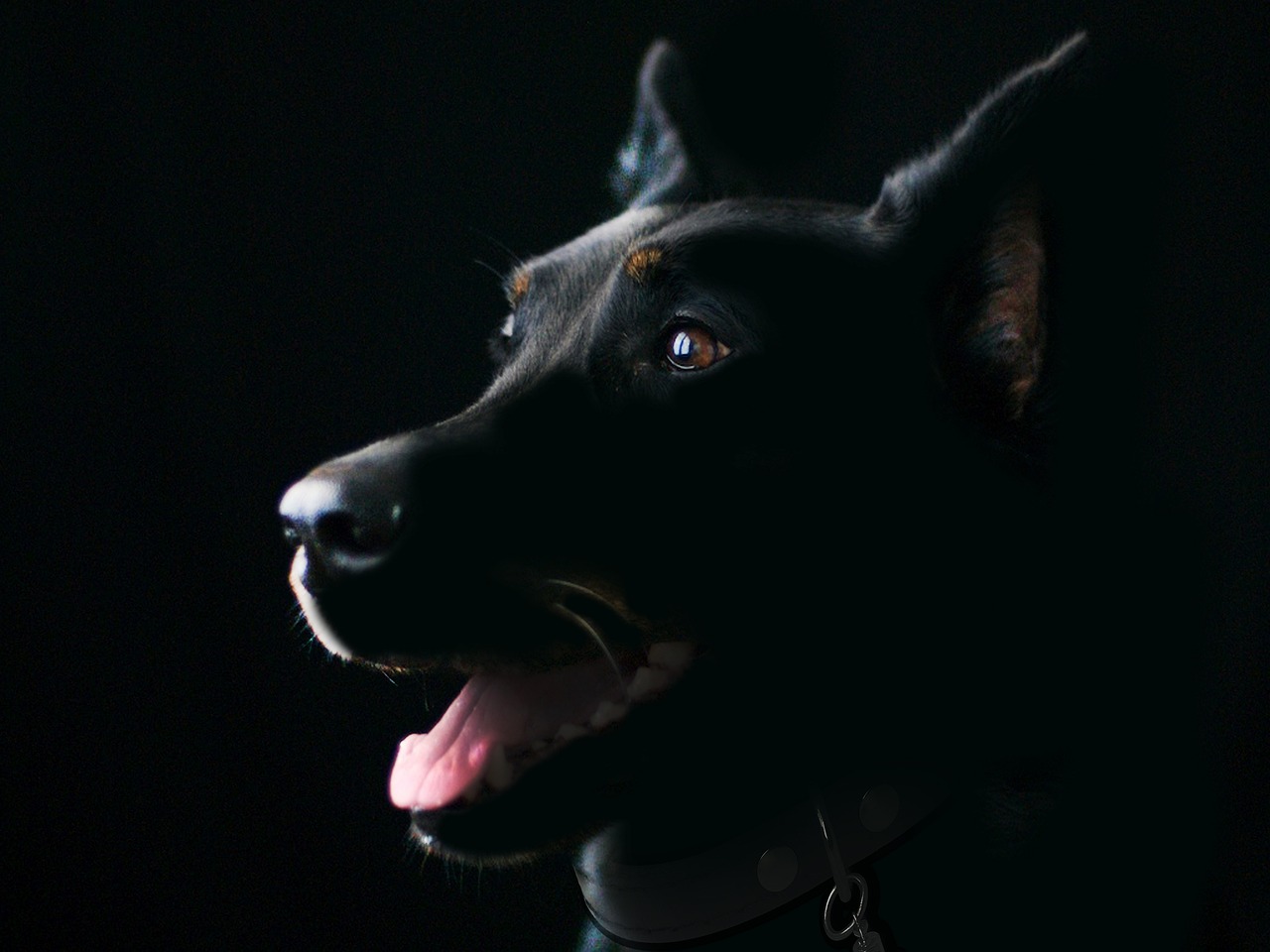Understanding Canine Cognitive Dysfunction
Canine Cognitive Dysfunction (CCD) is a neurodegenerative condition that affects our beloved dogs, much like Alzheimer's disease impacts humans. It's a heartbreaking reality for pet owners, as it leads to a decline in memory, learning abilities, and overall awareness in our furry companions. Imagine your dog, once vibrant and full of life, now seeming lost in their own home—this is the harsh reality of CCD. The symptoms can sneak up on you, and before you know it, your dog may be struggling with everyday tasks that were once second nature.
As a responsible pet owner, it's crucial to understand what CCD is and how it can affect your dog's quality of life. The condition doesn't just alter a dog's behavior; it can also change the dynamics of your relationship with them. You might notice them wandering aimlessly in familiar spaces, or perhaps they seem less interested in playing fetch or going for walks. These changes can be alarming and often leave us feeling helpless. But don't lose hope! Understanding the signs and symptoms of CCD is the first step towards providing your dog with the care they need.
CCD is not just a result of aging; it's a complex interplay of various factors. Age, genetics, and environmental influences all contribute to the onset of this condition. As our dogs grow older, their brains undergo changes that can lead to cognitive decline. Recognizing these changes early on can help you take proactive steps to manage your dog's health. For example, some breeds are more predisposed to CCD than others, which means that if you have a senior dog, it's essential to be vigilant about their cognitive health.
In the following sections, we will dive deeper into the symptoms, causes, and treatment options for CCD. By arming yourself with knowledge, you can make informed decisions that will help improve your dog's quality of life. Remember, early detection is key! So, let's embark on this journey together to better understand Canine Cognitive Dysfunction and how we can support our furry friends through it.

What is Canine Cognitive Dysfunction?
This article explores canine cognitive dysfunction, its symptoms, causes, and treatment options. It aims to provide pet owners with insights into managing this condition for their beloved dogs.
Canine Cognitive Dysfunction (CCD) is a neurodegenerative condition that affects older dogs, akin to Alzheimer's disease in humans. Just as we experience memory loss and confusion as we age, our furry friends can suffer from similar cognitive decline. This condition can significantly impact their memory, learning, and overall awareness, leading to noticeable behavioral changes that can be challenging for both the dog and the owner.
Imagine a once-vibrant dog, full of life and energy, now struggling to remember familiar faces or commands. This is the reality for many dogs diagnosed with CCD. The condition often manifests gradually, making it easy for pet owners to overlook the early signs. However, understanding CCD is crucial for timely intervention and improving the quality of life for our beloved pets.
The symptoms of CCD can vary widely, but they typically include:
- Disorientation: Dogs may appear lost in their own home or fail to recognize familiar surroundings.
- Changes in sleep patterns: Many dogs experience disrupted sleep, leading to nighttime pacing or excessive sleeping during the day.
- Altered interactions: Affected dogs may withdraw from social activities or show less enthusiasm for playtime.
- Bathroom habits: Incontinence or forgetting where to go can be common in dogs with CCD.
Understanding CCD is not just about recognizing these symptoms; it's about fostering a supportive environment for our dogs. By providing them with the right care and attention, we can help them navigate the challenges of cognitive dysfunction. This means being vigilant about their behavior, maintaining a routine, and engaging them in activities that stimulate their minds.
In summary, Canine Cognitive Dysfunction is a serious condition that requires awareness and proactive management. As pet owners, we owe it to our furry companions to understand what they are going through and to seek help when needed. The journey may be tough, but with the right knowledge and resources, we can make a significant difference in their lives.
Recognizing the symptoms of CCD is crucial for early intervention. Common signs include disorientation, disrupted sleep patterns, changes in interaction with family, and altered bathroom habits, which can significantly impact a dog's well-being.
Dogs with CCD may exhibit unusual behaviors such as increased anxiety, pacing, or repetitive actions. Understanding these changes can help owners provide appropriate care and seek veterinary advice when necessary.
Disorientation is a hallmark symptom of CCD. Affected dogs may get lost in familiar environments or forget commands, which can be distressing for both the pet and the owner.
Dogs suffering from CCD may withdraw from social interactions or show less interest in play. Recognizing these changes can help owners adjust their approach to maintain a healthy bond with their pets.
In addition to behavioral changes, physical symptoms such as altered sleep patterns and changes in appetite may occur. Monitoring these signs can aid in the timely diagnosis and management of CCD.
The exact causes of CCD are still being researched, but factors such as age, genetics, and environmental influences play significant roles. Understanding these factors can help in prevention and early detection.
As dogs age, their brains undergo changes similar to those in humans, leading to cognitive decline. Recognizing these age-related changes can help owners provide better care for their aging pets.
Certain breeds may be more susceptible to CCD due to genetic factors. Understanding breed-specific risks can help owners take proactive measures in monitoring their dog's cognitive health.
While there is no cure for CCD, various treatment options can help manage symptoms and improve quality of life. These may include medications, dietary changes, and cognitive enrichment activities.
Veterinarians may prescribe medications to help alleviate symptoms of CCD. These medications can improve cognitive function and help manage anxiety, allowing dogs to lead more comfortable lives.
Engaging dogs in cognitive enrichment activities, such as puzzle toys and training exercises, can stimulate their minds and slow cognitive decline. These activities foster mental engagement and strengthen the bond between dogs and their owners.
1. What are the early signs of Canine Cognitive Dysfunction?
Some early signs include changes in sleeping patterns, disorientation, and altered social interactions. Keep an eye on your dog's behavior for any unusual changes.
2. Can Canine Cognitive Dysfunction be cured?
Currently, there is no cure for CCD, but various treatment options can help manage symptoms and improve quality of life.
3. What can I do to help my dog with CCD?
Engaging your dog in cognitive enrichment activities, maintaining a routine, and consulting with a veterinarian for appropriate medications can all be beneficial.
4. Is CCD common in all dog breeds?
While CCD can affect any dog, certain breeds may be more predisposed due to genetic factors. It's essential to monitor your dog's cognitive health as they age.

Symptoms of Canine Cognitive Dysfunction
Recognizing the symptoms of Canine Cognitive Dysfunction (CCD) is crucial for early intervention. Just like humans experience memory loss and confusion as they age, our furry friends can also face similar challenges. The signs of CCD can be subtle at first, but as the condition progresses, they become more pronounced. It's essential for pet owners to be vigilant and aware of these changes to ensure their dogs receive the care they need.
Common symptoms of CCD include:
- Disorientation: Dogs may appear lost in familiar surroundings, wandering aimlessly or getting stuck in corners.
- Disrupted Sleep Patterns: Changes in sleep habits, such as insomnia or excessive sleeping, can indicate cognitive decline.
- Altered Interaction with Family: Dogs may become less responsive to commands or show reduced interest in social activities.
- Changes in Bathroom Habits: Accidents in the house or changes in the frequency of bathroom trips can signal cognitive issues.
These symptoms can significantly impact a dog's well-being and quality of life. For instance, a once playful and energetic dog may start to withdraw from family interactions or lose interest in their favorite toys. This withdrawal can be heartbreaking for pet owners who cherish the bond they share with their furry companions.
One of the most noticeable aspects of CCD is the behavioral changes that can occur. Dogs with CCD may exhibit unusual behaviors, such as:
- Increased Anxiety: Dogs may seem more anxious or fearful, exhibiting signs like pacing or whining.
- Repetitive Actions: Some dogs may engage in repetitive behaviors, such as circling or licking obsessively.
Understanding these changes is vital for owners to provide appropriate care and seek veterinary advice when necessary. It's not uncommon for pet owners to feel overwhelmed when they notice these changes. However, recognizing that these behaviors stem from a medical condition can help owners approach the situation with empathy and understanding.
Disorientation is a hallmark symptom of CCD. Affected dogs may get lost in familiar environments or forget commands, which can be distressing for both the pet and the owner. Imagine your dog, who used to know every corner of your home, suddenly standing at the door looking confused. This disorientation can lead to frustration and anxiety for both parties, making it essential to stay patient and supportive.
Another significant symptom of CCD is altered social interactions. Dogs suffering from this condition may withdraw from social interactions or show less interest in play. They might no longer greet you at the door with excitement or may seem indifferent when you call them. Recognizing these changes can help owners adjust their approach to maintain a healthy bond with their pets. Instead of forcing interactions, it may be more beneficial to engage them in low-pressure activities that encourage participation without overwhelming them.
In addition to behavioral changes, physical symptoms such as altered sleep patterns and changes in appetite may occur. Some dogs may experience insomnia, leading to restless nights, while others may sleep excessively during the day. Monitoring these signs can aid in the timely diagnosis and management of CCD. A sudden shift in appetite, whether increased or decreased, can also be a red flag. If your dog seems to have lost interest in their meals or is constantly begging for food, it’s worth discussing with your veterinarian.
In conclusion, being aware of the symptoms of canine cognitive dysfunction is vital for ensuring your dog's well-being. Early detection and intervention can significantly improve their quality of life and help maintain the bond you share. If you notice any of these signs in your furry friend, don’t hesitate to consult your veterinarian for guidance and support.
Q: What should I do if I suspect my dog has CCD?
A: If you notice any symptoms of CCD, it's important to consult your veterinarian for a thorough evaluation and to discuss potential treatment options.
Q: Can CCD be prevented?
A: While there is no guaranteed way to prevent CCD, maintaining a healthy diet, regular exercise, and mental stimulation can help promote cognitive health in dogs.
Q: Are there any specific breeds more prone to CCD?
A: Yes, certain breeds, especially larger ones, may have a higher predisposition to cognitive dysfunction. It's essential to be aware of your dog's breed-specific risks.
Behavioral Changes
When it comes to Canine Cognitive Dysfunction (CCD), one of the most noticeable aspects that pet owners encounter is the in their furry companions. Just like how we might feel a bit off when we're tired or stressed, dogs can exhibit similar signs when their cognitive functions begin to decline. These changes can manifest in various ways, and recognizing them is crucial for timely intervention.
One of the most common behavioral changes seen in dogs with CCD is an increase in anxiety. Imagine feeling lost in a crowded place; the confusion and unease can be overwhelming. Similarly, dogs may become restless, pacing around the house or appearing agitated without any apparent reason. This heightened anxiety can lead to other issues, such as excessive barking or destructive behaviors, which can be distressing for both the dog and the owner.
Another significant change is the tendency for dogs to engage in repetitive actions. This could include behaviors like circling, excessive licking, or staring at walls. These actions might seem trivial at first, but they can indicate a deeper cognitive issue. Just as humans might fidget or engage in repetitive behaviors when anxious, dogs with CCD may resort to these actions as a coping mechanism.
Furthermore, dogs may also begin to exhibit signs of disorientation and confusion. A once-vibrant pup might suddenly seem lost in familiar surroundings, struggling to navigate through the house or forgetting commands they previously mastered. This can be a heartbreaking experience for owners, as it feels like their beloved pet is drifting away. It's essential to approach these changes with patience and understanding, as they can be incredibly disorienting for the dog as well.
As social creatures, dogs thrive on interaction with their families. However, dogs suffering from CCD may withdraw from social interactions or show less interest in playtime. They might stop seeking out affection or become less responsive to their owners' calls. This withdrawal can create a rift in the bond between the dog and its owner, leading to feelings of sadness and frustration. Recognizing these changes early on can help owners adjust their approach, ensuring that their pets continue to feel loved and engaged.
In summary, the behavioral changes associated with CCD can be alarming and challenging to navigate. By staying observant and understanding the signs, pet owners can take proactive steps to support their dogs through this difficult time. Remember, while these changes can be distressing, they also provide an opportunity for owners to foster a deeper connection with their pets, ensuring they feel safe and loved despite the challenges they face.
- What is Canine Cognitive Dysfunction? - CCD is a neurodegenerative condition in dogs that affects their memory, learning, and awareness, similar to Alzheimer's in humans.
- How can I tell if my dog has CCD? - Look for signs such as disorientation, disrupted sleep patterns, changes in social interactions, and altered bathroom habits.
- Is there a cure for CCD? - While there is no cure, various treatment options are available to help manage symptoms and improve quality of life.
- What can I do to help my dog with CCD? - Engaging your dog in cognitive enrichment activities, providing a stable routine, and consulting with a veterinarian for medication can be beneficial.
Disorientation and Confusion
Disorientation and confusion are among the most distressing symptoms of Canine Cognitive Dysfunction (CCD). Imagine your beloved furry friend, once so lively and aware, now wandering aimlessly in a familiar room or staring blankly at a wall. It's heartbreaking, isn't it? This disorientation can manifest in various ways, leaving both the dog and the owner feeling lost and anxious. Affected dogs might forget where their food bowl is, struggle to find their favorite resting spots, or even appear confused about their owners' commands.
As a pet owner, it’s crucial to recognize these signs early on. You might notice your dog:
- Getting stuck in corners or behind furniture
- Looking around as if they don’t recognize their surroundings
- Failing to respond to familiar cues or commands
These behaviors can be incredibly unsettling. Imagine how it feels to see your dog, who once responded eagerly to your call, now staring blankly or walking in circles. This confusion may not only affect their daily activities but can also lead to increased anxiety, making it imperative for owners to provide a stable and reassuring environment.
To help mitigate disorientation, consider establishing a routine. Dogs thrive on predictability, and having a set schedule for feeding, walks, and playtime can help anchor them. Additionally, keeping their environment consistent—like minimizing changes in furniture or layout—can aid in reducing confusion. If your dog seems particularly lost, gently guiding them back to familiar spaces can also provide comfort and reassurance.
In some cases, disorientation can lead to increased vocalization or signs of distress. If you notice your dog barking excessively or showing signs of anxiety, it’s important to consult your veterinarian. They can help determine if there are underlying health issues contributing to these symptoms. Remember, early intervention is key to managing CCD effectively and maintaining your dog's quality of life.
Q: What are the first signs of Canine Cognitive Dysfunction?
A: Early signs can include disorientation, changes in sleep patterns, and altered social interactions. It's essential to monitor your dog's behavior closely.
Q: Is there a specific age when dogs are more likely to develop CCD?
A: While CCD can occur in dogs as young as 7 years old, the risk increases significantly as they age, particularly in dogs over 10 years old.
Q: Can diet affect my dog's cognitive health?
A: Yes, certain diets enriched with antioxidants and omega-3 fatty acids can support cognitive function and may help slow the progression of CCD.
Q: Are there any specific breeds more prone to CCD?
A: Some breeds, such as Dachshunds, Poodles, and Labrador Retrievers, may have a higher genetic predisposition to develop CCD.
Q: What should I do if I suspect my dog has CCD?
A: Consult your veterinarian for a thorough evaluation. They can provide guidance on diagnosis and potential treatment options.
Altered Social Interactions
When it comes to our beloved furry friends, social interactions are a crucial part of their lives. Dogs are inherently social creatures, thriving on companionship and engagement with their humans and other pets. However, canine cognitive dysfunction (CCD) can significantly alter these interactions, leading to noticeable changes in behavior that can be concerning for pet owners. For instance, a dog that once eagerly greeted visitors at the door may now retreat to a quiet corner, seemingly disinterested in the world around them. This withdrawal can be heartbreaking, as it not only affects the dog's happiness but also impacts the emotional connection between the pet and its owner.
In many cases, dogs suffering from CCD may display a reduced interest in play and social activities. They might stop participating in family games or ignore their favorite toys, which can be puzzling and distressing for their owners. Imagine having a once-vibrant companion who now seems distant and detached; it’s like watching a light dim in a room. This altered behavior can lead to feelings of sadness and frustration for both the dog and the owner. Understanding these changes is essential for maintaining a healthy bond.
As pet owners, it’s crucial to recognize these shifts in social interaction and adapt our approach accordingly. Here are a few strategies that can help:
- Maintain Routine: Keeping a consistent daily routine can provide comfort to dogs with CCD. Familiarity can help reduce anxiety and encourage interaction.
- Gentle Engagement: Instead of forcing interaction, try gently encouraging your dog to engage in activities. Use soft toys or treats to coax them into play without overwhelming them.
- Quality Time: Spend quiet time together, even if your dog doesn’t seem interested in play. Simply being in the same space can reinforce your bond.
Additionally, it’s essential to observe your dog's body language during interactions. Signs of discomfort, such as turning away, growling, or avoiding eye contact, should be taken seriously. These behaviors may indicate that your dog is feeling overwhelmed or anxious, and it’s vital to give them the space they need. By being attuned to your dog's needs, you can help create a supportive environment that fosters connection, even amidst the challenges of CCD.
In summary, altered social interactions due to canine cognitive dysfunction can be tough for both dogs and their owners. By recognizing the signs and adjusting our approach, we can help our furry friends navigate these changes while maintaining a loving and supportive relationship.
- What are the first signs of canine cognitive dysfunction? Early signs may include disorientation, disrupted sleep patterns, and changes in social behavior.
- Can CCD be reversed? Currently, there is no cure for CCD, but symptoms can be managed with appropriate treatment and care.
- How can I help my dog with CCD? Engage your dog in cognitive enrichment activities, maintain a consistent routine, and consult with your veterinarian for tailored treatment options.
Physical Symptoms
When it comes to Canine Cognitive Dysfunction (CCD), physical symptoms can often be just as telling as behavioral changes. These symptoms can manifest in various ways, and being vigilant about them is crucial for any dog owner. For instance, dogs with CCD may begin to experience altered sleep patterns. You might notice your furry friend sleeping more during the day and becoming restless at night, which can lead to a cycle of disrupted sleep that affects their overall health. This change can be alarming, especially if your dog has always been a champion sleeper.
Another physical sign to watch for is a change in appetite. Some dogs may lose interest in their food, while others might start to overeat, perhaps due to confusion or anxiety. This inconsistency can lead to weight loss or gain, which can further complicate their health. It's essential to monitor their eating habits closely and consult with a veterinarian if you notice significant changes.
Additionally, dogs suffering from CCD may show signs of decreased grooming behavior. You might find that your dog is not as meticulous about keeping their coat clean as they used to be, leading to a scruffy appearance. This lack of self-care can be a direct reflection of their cognitive decline, making it important for owners to step in and assist with grooming routines.
Understanding these physical symptoms can be a game changer in managing CCD. By recognizing the signs early, you can take proactive steps to improve your dog's quality of life. For example, ensuring they have a comfortable sleeping environment can help mitigate sleep disturbances. Similarly, providing a balanced diet tailored to their needs can address appetite changes. Remember, your dog relies on you to notice these changes and act accordingly.
- What is Canine Cognitive Dysfunction?
Canine Cognitive Dysfunction is a neurodegenerative condition that affects a dog's cognitive abilities, similar to Alzheimer's disease in humans. - What are the early signs of CCD?
Early signs include disorientation, changes in sleep patterns, altered social interactions, and changes in appetite. - Can CCD be treated?
While there is no cure, symptoms can be managed through medications, dietary changes, and cognitive enrichment activities. - How can I help my dog with CCD?
Engaging your dog in brain-stimulating activities, maintaining a routine, and consulting a veterinarian for tailored advice can help.

Causes of Canine Cognitive Dysfunction
Understanding the causes of Canine Cognitive Dysfunction (CCD) is essential for pet owners who want to safeguard their furry friends' mental health. While the exact causes of CCD are still under investigation, several key factors have emerged as significant contributors. One of the most notable factors is age. Just like humans, as dogs grow older, their brains undergo various changes that can lead to cognitive decline. This aging process can result in a reduction of brain cells and alterations in neurotransmitter levels, which are critical for communication between brain cells.
Another contributing factor is genetics. Certain dog breeds are more predisposed to developing CCD than others. For example, breeds such as Boxers, Golden Retrievers, and Doberman Pinschers have been observed to show a higher incidence of cognitive dysfunction. Understanding these breed-specific risks enables owners to be proactive in monitoring their pets’ cognitive health.
Additionally, environmental influences play a role in the development of CCD. Factors such as stress, lack of mental stimulation, and inadequate socialization can exacerbate cognitive decline. Dogs that are frequently left alone for long periods or those that experience significant changes in their environment—like moving homes or changes in family dynamics—may be at a higher risk. It's crucial for dog owners to create a stable and enriching environment to mitigate these risks.
Furthermore, some studies suggest that diet may also influence cognitive health. Diets lacking in essential nutrients can contribute to cognitive decline. Nutritional deficiencies, particularly in antioxidants and omega-3 fatty acids, may impair brain function. Therefore, providing a balanced diet rich in these nutrients can potentially support cognitive health and delay the onset of CCD.
In summary, the causes of Canine Cognitive Dysfunction are multifaceted, involving a combination of age-related changes, genetic predisposition, environmental factors, and dietary influences. By understanding these causes, pet owners can take proactive steps to monitor their dogs and seek early intervention if necessary.
- What are the early signs of Canine Cognitive Dysfunction?
Early signs may include disorientation, disrupted sleep patterns, and changes in interaction with family members. - Can CCD be cured?
Currently, there is no cure for CCD, but various treatment options can help manage symptoms and improve quality of life. - How can I help my dog with CCD?
Engaging your dog in cognitive enrichment activities and providing a balanced diet can help manage symptoms and enhance their quality of life.
Age-Related Changes
As our furry friends age, they undergo a series of natural changes that can significantly impact their cognitive functioning. Just like humans, dogs experience brain aging, which can lead to a decline in memory, learning, and awareness. This process is often gradual, making it easy for pet owners to overlook the early signs. However, being proactive about these changes can greatly enhance your dog's quality of life.
One of the most noticeable aspects of age-related changes in dogs is the decline in neurotransmitter levels. These are the chemicals that help transmit signals in the brain, and as they decrease, cognitive function can suffer. For instance, a decrease in dopamine can lead to reduced motivation and increased anxiety, making it harder for your dog to engage in activities they once enjoyed.
Additionally, the brain structure itself begins to change. Neurodegeneration, or the loss of neurons, can lead to issues with memory and learning. Studies have shown that older dogs may have smaller brain sizes and altered brain chemistry compared to younger dogs. This can result in a range of symptoms, including:
- Disorientation in familiar environments
- Difficulty in learning new commands
- Changes in sleep patterns, often sleeping more during the day and being restless at night
Moreover, age-related changes can also affect a dog's physical health. Conditions such as arthritis or vision impairment can further complicate cognitive issues, making it essential to consider the whole picture when assessing your dog's well-being. Regular veterinary check-ups become increasingly important as dogs age, allowing for early detection of potential cognitive decline and other related health issues.
Understanding these age-related changes can empower you, as a pet owner, to take proactive steps in managing your dog's cognitive health. Engaging your dog in mental stimulation activities, providing a balanced diet, and ensuring they have a safe and loving environment can all contribute to a happier, healthier life in their golden years.
1. What are the first signs of cognitive dysfunction in dogs?
Common early signs include disorientation, changes in sleep patterns, and altered social interactions. If you notice your dog getting lost in familiar places or forgetting commands, it might be time to consult your vet.
2. Can cognitive dysfunction be reversed?
Unfortunately, there is no cure for canine cognitive dysfunction. However, various treatment options can help manage symptoms and improve your dog's quality of life.
3. How can I help my dog with cognitive dysfunction?
Engaging in cognitive enrichment activities, maintaining a consistent routine, and consulting with your veterinarian about possible medications can all help support your dog's cognitive health.
4. Are certain breeds more prone to cognitive dysfunction?
Yes, some breeds may have a genetic predisposition to cognitive dysfunction. It's essential to be aware of your dog's breed-specific risks and monitor their cognitive health as they age.
Genetic Predisposition
When it comes to Canine Cognitive Dysfunction (CCD), genetics plays a significant role in determining a dog's likelihood of developing this condition. Just like in humans, certain breeds are more susceptible to cognitive decline as they age. This genetic predisposition can be attributed to various factors, including inherited traits and specific biological markers that influence brain health.
For example, breeds such as Boxers, Doberman Pinschers, and Golden Retrievers have shown higher incidences of CCD compared to others. These breeds may have genetic variations that affect their neurological functions, making them more vulnerable to cognitive decline. Understanding this predisposition is crucial for dog owners, as it allows them to monitor their pets more closely as they age.
In addition to breed-specific risks, there are also individual genetic factors that can impact a dog's cognitive health. For instance, dogs with a family history of cognitive dysfunction may be at a greater risk. Therefore, knowing your dog's lineage can provide insights into potential health issues. It’s like having a roadmap; if you know where you come from, you can better prepare for the journey ahead.
Furthermore, researchers are actively studying the genetic markers associated with CCD to develop better screening tools and preventive measures. This ongoing research holds promise for identifying at-risk dogs early, allowing for timely interventions that can improve their quality of life.
In summary, while age is a significant factor in the development of CCD, genetics cannot be overlooked. By understanding the genetic predisposition of their dogs, owners can take proactive steps to ensure their furry friends receive the best possible care. After all, knowledge is power, and being informed can lead to better outcomes in managing your dog's cognitive health.
- What are the early signs of Canine Cognitive Dysfunction?
Early signs include disorientation, decreased activity levels, and changes in sleeping patterns. - Can CCD be treated?
While there is no cure, symptoms can be managed through medications and cognitive enrichment activities. - Is CCD common in all dog breeds?
No, certain breeds are more predisposed to CCD than others. - How can I help my dog if they show signs of CCD?
Consult your veterinarian for a diagnosis and discuss potential treatment options.

Treatment Options for Canine Cognitive Dysfunction
While there is currently no definitive cure for Canine Cognitive Dysfunction (CCD), a variety of treatment options exist to help manage the symptoms and significantly enhance the quality of life for affected dogs. It's essential for pet owners to work closely with their veterinarians to devise a tailored treatment plan that addresses the specific needs of their furry companions. This plan may include a combination of medications, dietary changes, and cognitive enrichment activities.
One of the primary approaches in managing CCD is through medications. Veterinarians often prescribe drugs that aim to improve cognitive function and alleviate anxiety. These medications can help stabilize mood and may even slow the progression of cognitive decline. Some commonly prescribed medications include:
| Medication | Purpose |
|---|---|
| Selegiline | Helps improve cognitive function and reduce anxiety. |
| Anipryl | May enhance memory and learning capabilities. |
| Propentofylline | Improves blood flow to the brain and supports cognitive health. |
In addition to medications, dietary changes can play a crucial role in managing CCD. Nutritional supplements, such as antioxidants and omega-3 fatty acids, have been shown to support brain health. Foods specifically formulated for senior dogs often contain these beneficial ingredients to promote cognitive function. It's vital to consult with a veterinarian to determine the best dietary options for your dog, as each pet has unique nutritional needs.
Another effective strategy involves engaging dogs in cognitive enrichment activities. Just like humans, dogs need mental stimulation to stay sharp. Activities such as puzzle toys, interactive games, and training exercises can help keep their minds active and engaged. Not only do these activities foster mental engagement, but they also strengthen the bond between dogs and their owners. Here are some examples of cognitive enrichment activities:
- Puzzle toys that dispense treats
- Hide-and-seek games
- Obstacle courses
- Training sessions with new commands
Incorporating these activities into your dog's daily routine can help alleviate some symptoms of CCD and provide a sense of purpose and enjoyment. Remember, the goal is to create a stimulating environment that encourages your dog to think and explore.
Overall, while CCD can be a challenging condition, the right combination of treatments can lead to improved well-being for your dog. Regular veterinary check-ups and open communication with your vet are essential to monitor the condition and make necessary adjustments to the treatment plan. With a proactive approach, you can help your beloved pet navigate the challenges of cognitive dysfunction and continue to enjoy their golden years with you.
Q1: How can I tell if my dog is suffering from CCD?
A1: Look for signs such as disorientation, changes in sleep patterns, altered social interactions, and unusual behaviors like pacing or anxiety. If you notice these symptoms, consult your veterinarian for a proper assessment.
Q2: Is CCD common in all dog breeds?
A2: While CCD can affect any dog, certain breeds may be more predisposed to developing cognitive dysfunction as they age. It's essential to monitor your dog's cognitive health, especially if they belong to a breed known for higher risks.
Q3: Can CCD be prevented?
A3: While there is no guaranteed way to prevent CCD, maintaining a healthy lifestyle for your dog, including regular exercise, mental stimulation, and a balanced diet, can help reduce the risk of cognitive decline.
Q4: How often should my dog have veterinary check-ups if they have CCD?
A4: Regular veterinary check-ups are crucial for dogs with CCD. Your vet may recommend visits every 6 to 12 months to monitor your dog's condition and adjust the treatment plan as needed.
Medications
When it comes to managing Canine Cognitive Dysfunction (CCD), medications can play a pivotal role in improving your dog's quality of life. While there is no definitive cure for CCD, various medications can help alleviate symptoms and enhance cognitive function. Veterinarians often prescribe medications such as selegiline, which is known to increase dopamine levels in the brain, potentially improving memory and learning abilities in dogs. Another option is anipryl, which works similarly to selegiline and has shown promise in easing the symptoms associated with CCD.
It's essential to consult with your veterinarian to determine the most appropriate medication for your furry friend. Each dog is unique, and what works for one may not work for another. Your vet will consider factors such as your dog's age, overall health, and the severity of the condition before prescribing any medication. Regular check-ups will also allow for adjustments in dosage or medication type, ensuring that your dog receives the best possible care.
In addition to the medications mentioned, there are also supplements available that may help support cognitive function. These can include fatty acids like Omega-3, antioxidants, and other brain-boosting nutrients. Incorporating these into your dog's diet, under the guidance of your veterinarian, can further assist in managing CCD symptoms.
It's important to monitor your dog's response to any medication closely. Look for improvements in behavior, such as increased interaction with family members or a reduction in anxiety-driven behaviors. However, if you notice any adverse reactions, such as excessive lethargy or gastrointestinal issues, contact your veterinarian immediately. Your dog's well-being is the top priority, and adjustments may be necessary to find the right balance.
In summary, while medications can significantly help manage the symptoms of CCD, they should be part of a comprehensive treatment plan that includes cognitive enrichment activities and a healthy diet. By working closely with your veterinarian and being proactive in your dog's care, you can help them navigate the challenges of cognitive decline and maintain a fulfilling life.
- What are the signs that my dog may have CCD? Look for symptoms like disorientation, changes in social interactions, altered sleep patterns, and changes in bathroom habits.
- Can CCD be cured? Currently, there is no cure for CCD, but symptoms can be managed effectively with medications and lifestyle changes.
- How can I help my dog with CCD? Engage your dog in cognitive enrichment activities, maintain a consistent routine, and consult your veterinarian for appropriate medications.
- Are certain breeds more prone to CCD? Yes, some breeds may have a genetic predisposition to cognitive dysfunction, making it essential for owners to monitor their dog's cognitive health.
Cognitive Enrichment Activities
Cognitive enrichment activities are a fantastic way to engage your dog’s mind and slow the progression of Canine Cognitive Dysfunction (CCD). Just like humans, dogs thrive on mental stimulation, and keeping their brains active can significantly improve their quality of life. Imagine your dog as a curious child; if you don’t provide them with the right tools and activities, they may become bored, anxious, or even depressed. So, how can you turn your home into a fun-filled learning environment for your furry friend?
One effective method is to introduce puzzle toys. These toys are designed to challenge your dog's problem-solving skills and can range from simple treat-dispensing balls to complex interactive games that require multiple steps to solve. By engaging with these toys, your dog not only enjoys a tasty reward but also exercises their brain. You can even create your own DIY puzzle toys using household items, like hiding treats in a muffin tin and covering them with tennis balls. This way, you can customize the difficulty level based on your dog’s cognitive abilities.
Another great way to promote cognitive health is through training exercises. Teaching your dog new tricks or reinforcing basic commands can be both fun and beneficial. For example, you might work on commands like “sit,” “stay,” or even more advanced tricks like “roll over” or “play dead.” The process of learning something new stimulates your dog’s brain and strengthens the bond between you two. Plus, it’s a wonderful way to spend quality time together, which can be incredibly rewarding for both you and your pet.
Social interactions can also serve as a form of cognitive enrichment. Organizing playdates with other dogs or taking your dog to a dog park can expose them to new environments and interactions. These experiences can help improve their social skills and keep their minds sharp. Just like humans, dogs can benefit from meeting new friends and exploring different settings, which can help alleviate some of the symptoms associated with CCD.
Incorporating sensory activities is another effective strategy. Dogs experience the world through their senses, so activities that engage their sense of smell or sight can be particularly stimulating. For instance, you can set up a scavenger hunt in your backyard or home, hiding treats or favorite toys in various locations. This encourages your dog to use their nose and problem-solving skills to find the hidden treasures. You might be surprised at how much joy and excitement this simple activity can bring to your dog.
Lastly, don’t forget about the importance of routine. Dogs thrive on predictability, and establishing a daily schedule that includes a mix of physical exercise, training, and cognitive activities can create a balanced lifestyle that keeps their minds and bodies healthy. Think of it as a well-rounded diet for their brain; just like we need a variety of nutrients, dogs need a variety of activities to stay mentally fit.
In conclusion, cognitive enrichment activities are essential for managing Canine Cognitive Dysfunction and enhancing your dog's overall well-being. By incorporating puzzle toys, training exercises, social interactions, sensory activities, and a consistent routine into your dog's daily life, you can help them maintain their cognitive abilities and enjoy a happier, healthier life.
- What are the early signs of Canine Cognitive Dysfunction?
Early signs include disorientation, changes in sleep patterns, and altered interactions with family members.
- Can diet affect my dog's cognitive health?
Yes, a balanced diet rich in antioxidants and omega-3 fatty acids can support brain health and cognitive function.
- Is medication necessary for all dogs with CCD?
Not all dogs require medication; many can benefit from cognitive enrichment and lifestyle changes.
- How often should I engage my dog in cognitive activities?
Daily engagement is ideal, but even a few times a week can make a significant difference.
Frequently Asked Questions
- What are the early signs of Canine Cognitive Dysfunction?
Early signs of Canine Cognitive Dysfunction (CCD) can include disorientation, changes in sleep patterns, and altered interactions with family members. If your dog seems confused or forgets familiar commands, it might be time to consult your veterinarian.
- Is Canine Cognitive Dysfunction common in older dogs?
Yes, CCD is quite common in older dogs. Just like humans, as dogs age, their cognitive functions can decline. It's crucial to monitor your pet's behavior as they get older to catch any changes early.
- Can CCD be treated or managed?
While there is currently no cure for CCD, it can be managed through medications, dietary changes, and cognitive enrichment activities. These approaches can help improve your dog's quality of life and slow the progression of symptoms.
- What types of medications are used for CCD?
Veterinarians may prescribe medications that help improve cognitive function and manage anxiety in dogs with CCD. These can include specific supplements or drugs that target brain health.
- How can I help my dog engage mentally?
Engaging your dog in cognitive enrichment activities like puzzle toys, training exercises, or scent games can stimulate their mind. These activities not only help maintain mental sharpness but also strengthen your bond with your furry friend.
- Are certain dog breeds more prone to CCD?
Yes, some breeds may have a genetic predisposition to developing CCD. It's important to be aware of your dog's breed and monitor them for any signs of cognitive decline as they age.
- How can I tell if my dog's behavior is due to CCD or just normal aging?
Distinguishing between normal aging and CCD can be tricky. If you notice significant behavioral changes, such as increased anxiety, confusion, or withdrawal from social interactions, it's best to consult with your veterinarian for a proper assessment.
- What lifestyle changes can I make to benefit my aging dog?
Maintaining a consistent routine, providing mental stimulation, and ensuring a balanced diet can greatly benefit your aging dog. Regular veterinary check-ups are also essential to monitor their cognitive health.



















